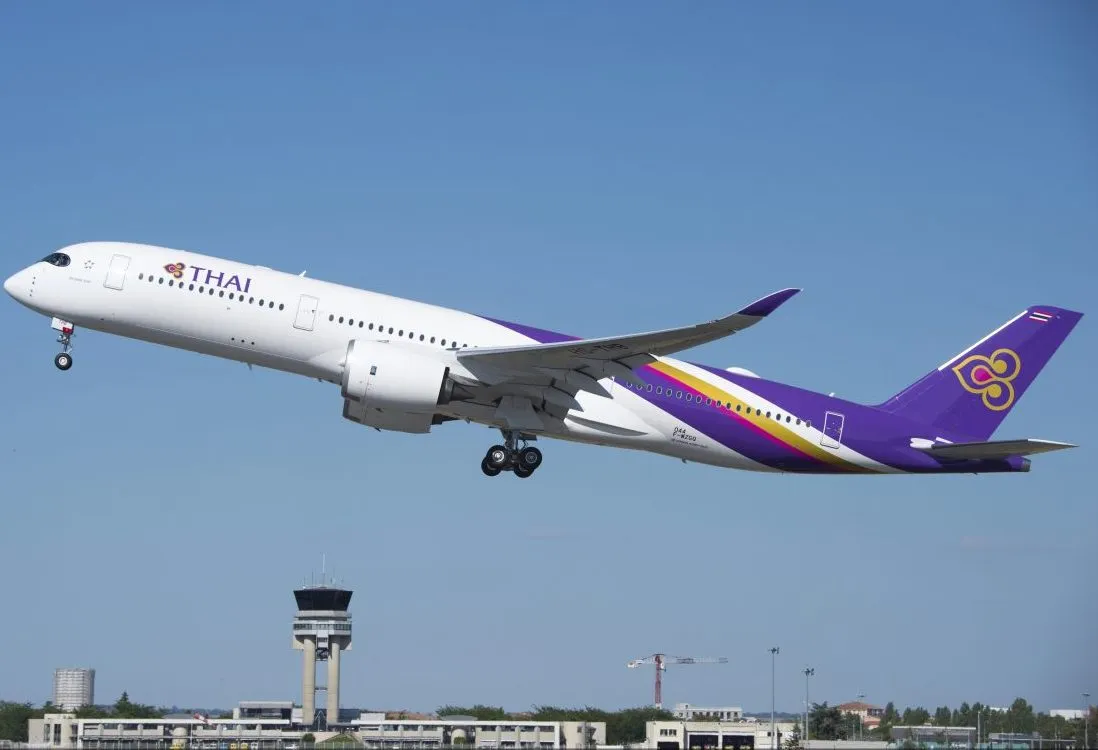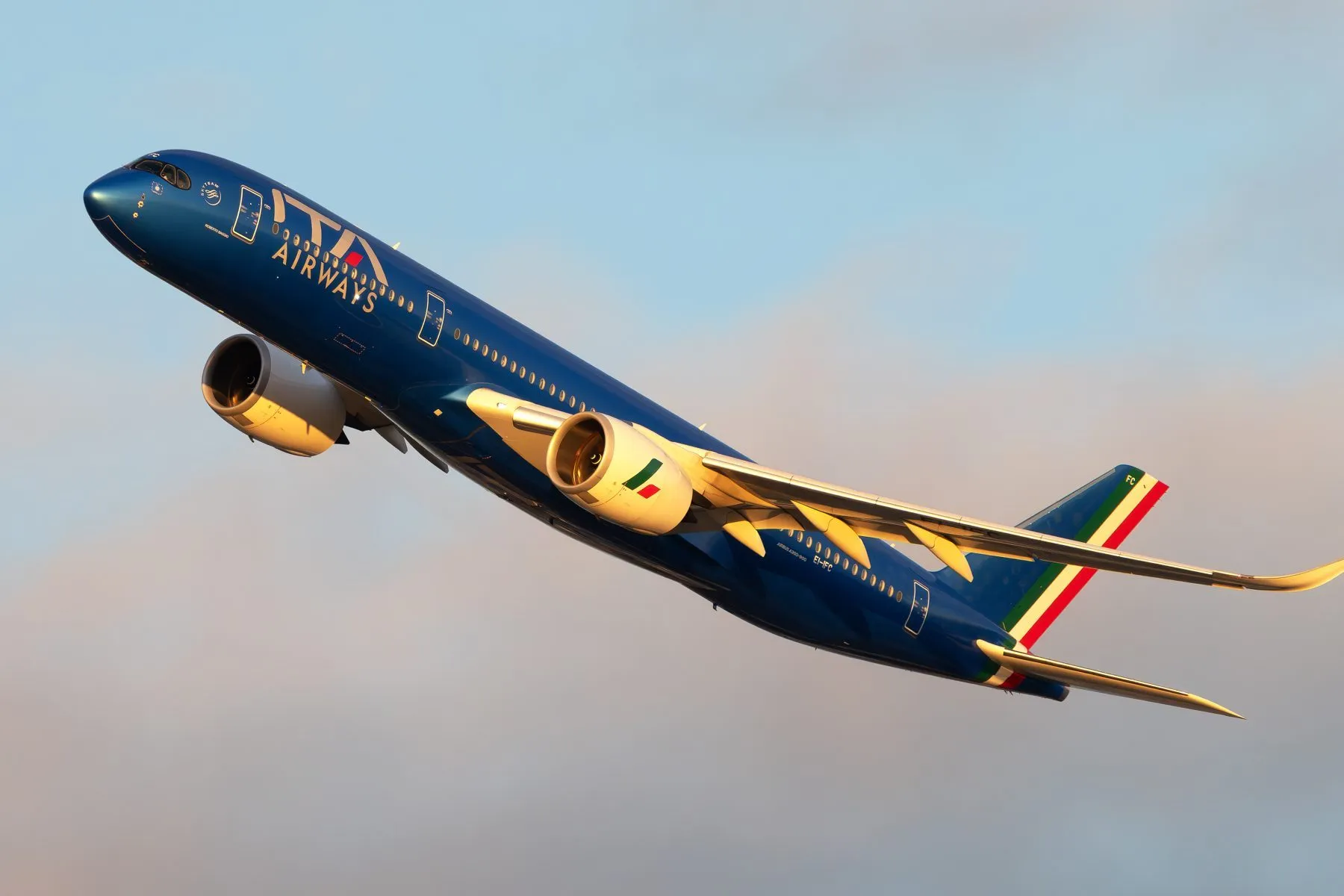What’s Next for Asia-Pacific Airlines? We Hear from 9 Top Executives

Skift Take
A rapidly expanding middle class, booming inbound tourism, and the steady return of business travel. All three factors are helping drive travel demand and capacity. From India to Australia and countless countries in between, sustained growth is firmly back on the agenda.
Sometimes overlooked in favor of Europe or the Americas, airline activity in Asia-Pacific cannot be ignored. The region is home to 60% of the world's population, and many of its fastest-growing economies.
Despite the tailwinds, Asia-Pacific is not immune to global challenges. Airline leaders gathered in Perth, Australia last week for the Routes Asia forum, and Skift was there to gauge the mood music from the industry.
Qantas at an ‘Inflection Point’
Home airline Qantas was one of the hardest hit by the pandemic, but Scott Zeglin, the Australian flag carrier’s head of commercial strategy and performance, declared the Covid effect well and truly over on the first day of the annual Routes Asia gathering.
Now at 105% of pre-pandemic capacity and with the last of its parked A380 superjumbos about to re-join the fleet, Zeglin said the carrier was at an "inflection point” where comparisons with 2019 were no longer helpful.
“We've seen that in the domestic and international market, we've got a good baseline now to plan from,” he told delegates. "We're officially done with ‘pre-Covid’ as a benchmark because everything has changed.”
Qantas is due to receive a new aircraft every three weeks for the next three years. These range from single-aisle Airbus A320neos (13 for their low-cost Jetstar subsidiary) to the stretched Boeing 787-10 (eight, for Qantas’ mainline fleet).
“We're starting to go through the largest fleet transition in our history, taking on the Airbus A321XLR, Project Sunrise aircraft, and new widebodies. Those just open up so many different propositions and lines and spots,” said Zeglin.
On the topic of Project Sunrise – highly anticipated nonstop flights linking Australia’s east coast with New York and London — Zeglin provided an update. Building on recent comments by Qantas Group CEO Vanessa Hudson, he confirmed Qantas is unlikely to start regularly scheduled services on the ultra-long-haul routes until the middle of 2027.
Southeast Asia Surge
Fueled by youthful, mobile populations and rising incomes, the Philippines, Indonesia, and Vietnam are benefiting from – and driving – a resurgent regional market.
"The Philippines is blessed with a very young population," said Rohan Kapoor, group director for operations contracts and asset management at Cebu Pacific, the country’s largest airline. “GDP continues to grow, which leads to higher disposable incomes. The future is really exciting.”
Airport infrastructure in the Philippines remains a hurdle, though recent moves toward privatization are expected to ease congestion, he said. "Manila Airport has a similar runway configuration to Gatwick and Mumbai, and where they have close to 50 movements an hour, Manila touches about 40. So if you can get those additional 10, that will really help," Kapoor added.
As well as infrastructure improvements, the arrival of new aircraft types is also enabling growth. The Airbus A321XLR (that’s Xtra Long Range) is unlocking possibilities for airlines in the region. Notably, it’s not just for flag carriers such as Qantas but also low-cost airlines that plan to fill the aircraft with high-density cabins on thinner routes between secondary cities. Fuel-efficient widebodies are also part of the mix, as evidenced by comments from executives at VietJet Air. The Hanoi-based budget airline is optimistic about its long-term plans, including the possibility of tapping into the U.S. market.
"We have a big order book with both Airbus and Boeing,” Jay L Lingeswara, VP commercial at Vietjet Air, told the Routes forum. He described the more fuel-efficient A330neo as a “fantastic aircraft,” adding: “They will be for our European markets and we are also looking at some opportunities in getting these aircraft to the U.S., with a stop-over.”
The Vietnamese firm expects to receive 20 of these new-generation jets to replace its A330-300 predecessors.
Japan’s Mixed Market
Tracking east, Japan's domestic air travel market remains sluggish. However, it isn’t all bad news – the country is benefiting from a surge in international inbound traffic.
Pre-Covid, the mix of passengers using the country's airlines stood at roughly 70% Japanese and 30% international. Remarkably, this has been flipped on its head, with more than two-thirds of airline passengers originating from overseas, said Motohisa Abe, VP for international route strategy at Japan Airlines.
"The Yen is very weak which is why so many passengers are coming, which is great for the Japanese economy. At the same time, in terms of outbound from Japan, the demand is still very low,” he explained.
“However, if we look at the growth trend in markets such as Hawaii or Guam, demand is coming back. Within Japan, the domestic market compared to 2019 is around 90%; that is worse than the domestic Chinese market, which is at 95-96%,” added Abe.
China’s Recovery
According to Matthew Choi, general manager of corporate planning at HK Express, the Chinese aviation market is rebounding strongly.
Domestic travel is nearly back to pre-pandemic levels, while international travel is catching up rapidly. The airline is the low-cost arm of Hong Kong carrier Cathay Pacific.
"Domestic travel within China has pretty much almost recovered to pre-Covid times. It's around 5-7% below 2019 levels. International travel is still around 10-15% lower than 2019 levels, but year-on-year growth has been dramatic, around a 40% increase,” he said.
Choi also highlighted the long-term impact of visa rule relaxations in the region, which has fueled outbound demand among the airline’s Chinese customers.
India’s Competitive Battleground
As Asia's other major powerhouse, the Indian aviation market is booming. This comes despite strong competition creating a challenging environment, according to several domestic operators attending the forum.
Neelu Khatri, SVP for international operations at Akasa Air, which commenced operations in 2022, warned that India had become a “graveyard” for many airlines, and emphasized the importance of consistent service quality for new entrants to drive customer loyalty.
Meanwhile, Shashi Chetia, VP and head of network planning and alliances at Air India Express, echoed her remarks: “In the past, some of India’s airlines have closed down, and so we need to really be very cautious. We really need to keep a close eye on cost control," he said.
Chetia added that the Tata-owned carrier was focused on boosting sales of ancillaries and using artificial intelligence to provide smarter ticket pricing solutions. Reflecting on the battle for a share of the burgeoning Indian market, he added: “There's intense competition going on. It’s a tight rope which we need to walk.”
Fixing Boeing
Airlines were keen to talk up their expansion plans but the conference agenda was also dominated by warnings. Well-documented bottlenecks in the supply chain have caused delays in the delivery of new Airbus and Boeing aircraft.
Thiti Arayakhun, head of scheduling at Thai Airways, said the carrier wanted to add new planes to its fleet but simply could not “get the aircraft in time.” The Bangkok-based carrier – also the location for next month’s Skift Asia Forum – is facing a “very challenging” operating environment as a result.
“This year is the year to increase flights, but we need to get aircraft, particularly widebodies. I am also worried about capacity; slots at some of the airports, such as Manila and Jakarta, are preventing us from expanding. If we expand our European flights, we need these regional connecting flights as feeders. In 2026 we will have to do a lot of hard work,” added Arayakhun.
For its part, Boeing’s representative at the forum said the company was making strides in addressing these aircraft delivery delays.
“Over the last six years, we've been on a turbulent journey. We had fallout from the Max incidents, global trade disputes, the pandemic, leadership changes at Boeing, and at the end of 2024 we also had a strike. Some say this has been the most difficult period for Boeing in our 109-year history. But today, I'm very pleased Boeing is back on track," said Malcom An, senior managing director for global strategic initiatives, commercial sales, and marketing at Boeing.
"In January and February of this year, we delivered 45 and 44 airplanes respectively in those months, and March looked like another good delivery month. Today, we're talking to customers about potentially coming in early to take deliveries, the production system is stabilizing and the health of our system is getting better every day.”
After a sold-out debut in Singapore, Skift Forum Asia returns on May 14-15, 2025. Join us in Bangkok where the region’s top travel leaders tackle what’s next for airlines, hotels, tourism boards, and tech. For more information and to secure your spot, click here.
Watch Campbell Wilson, Air India CEO, at the Skift India Forum 2025:
Airlines Sector Stock Index Performance Year-to-Date
What am I looking at? The performance of airline sector stocks within the ST200. The index includes companies publicly traded across global markets including network carriers, low-cost carriers, and other related companies.
The Skift Travel 200 (ST200) combines the financial performance of nearly 200 travel companies worth more than a trillion dollars into a single number. See more airlines sector financial performance.




